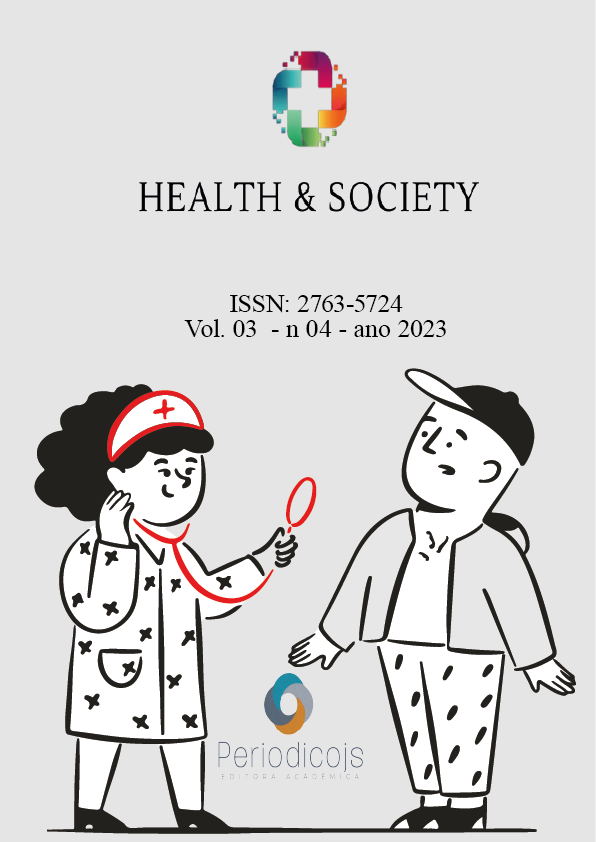Resumo
The history of dentistry has origins that are lost in time, with ancient records that date back to the manufacture of dental prostheses. In the contemporary scenario, dentistry has experienced remarkable progress, especially in the field of dental prostheses, where new materials have emerged with the aim of harmoniously integrating with the natural structure of the teeth. One of the notable advances is the innovation of alternatives for Removable Partial Dentures, moving away from conventional metallic components and adopting plastic materials. These polymeric options provide greater flexibility, minimize allergy risks, and facilitate adaptation. From a methodological perspective, an extensive literature search was undertaken, using the renowned PUBMED database, covering the time interval between 2013 and 2023. The chosen keywords, “Dentistry”, “dental prosthesis” and “partial prosthesis flexible”, were adopted to guide the consultation. By compiling the samples extracted from the examined literature, it is possible to deduce that flexible prostheses inherently offer superior aesthetic and comfort attributes to patients, thus surpassing conventional alternatives. Despite the ergonomic and aesthetic advantages that they present, the use of flexible prostheses as a permanent prosthetic solution lacks justification, due to the potential harmful impact on periodontal support, mainly associated with the lack of occlusal support. Therefore, it is undeniable that flexible prostheses provide remarkable comfort and admirable aesthetics, which puts them in an advantageous position compared to traditional alternatives. However, there are still intrinsic aspects that deserve attention and improvement. In this context, the continuous search for excellence in the balance between the desired aesthetics and the necessary durability is evident, aiming to offer patients a complete and satisfactory prosthetic experience. The present work proposes to elucidate the advantages and permanence inherent to flexible partial dentures, in addition to making a comparison regarding their quality and durability as opposed to conventional partial dentures. This analysis is primarily based on the review of the relevant scientific literature, thus allowing a grounded and objective approach to the subject in question.
Referências
Akinyamoju CA, Dosumu OO, Taiwo JO, Ogunrinde TJ, Akinyamoju AO. Oral health-related quality of life: acrylic versus flexible partial dentures. Ghana Med J. 2019;53(2):163-169. doi:10.4314/gmj.v53i2.12.
Mousa MA, Abdullah JY, Jamayet NB, et al. Biomechanics in Removable Partial Dentures: A Literature Review of FEA-Based Studies. Biomed Res Int. 2021;2021:5699962. Published 2021 Aug 26. doi:10.1155/2021/5699962.
Singh K, Aeran H, Kumar N, Gupta N. Flexible thermoplastic denture base materials for aesthetical removable partial denture framework. J Clin Diagn Res. 2013;7(10):2372-2373. doi:10.7860/JCDR/2013/5020.3527.
Akinyamoju CA, Ogunrinde TJ, Taiwo JO, Dosumu OO. Comparison of patient satisfaction with acrylic and flexible partial dentures. Niger Postgrad Med J. 2017;24(3):143-149. doi:10.4103/npmj.npmj_54_17.
Ahuja S, Jain V, Wicks R, Hollis W. Restoration of a partially edentulous patient with combination partial dentures. Br Dent J. 2019;226(6):407-410. doi:10.1038/s41415-019-0095-z.

Este trabalho está licenciado sob uma licença Creative Commons Attribution 4.0 International License.
Copyright (c) 2023 Erika Carlos da Silva, Eva Maria de Amorim Santos, Julia Marita Ribeiro de Amorim, Katy Rejane Santana de Freitas, Lorenzo Luna de Souza, Marcone Natágoras Alves de Albuquerque, Maria Aparecida de Araújo Lima, Maria Eduarda da Silva Ribeiro, Welber Dannylo Macedo Rodrigues, José Wilker Eufrásio do Nascimento





